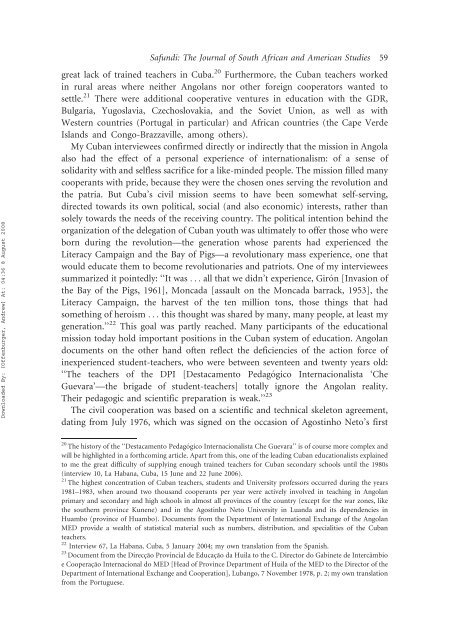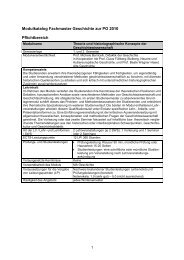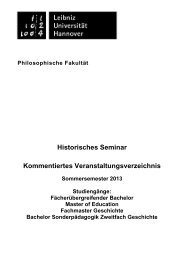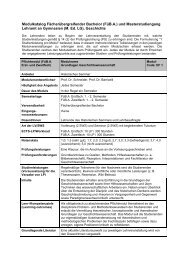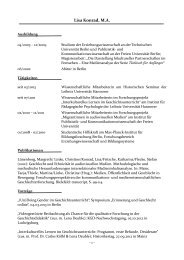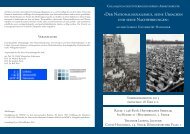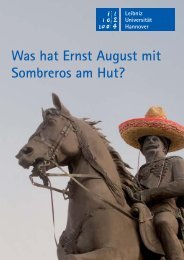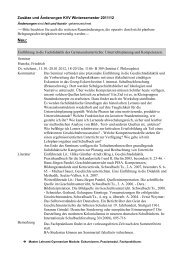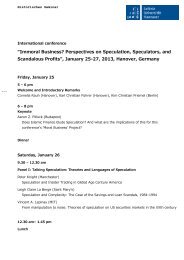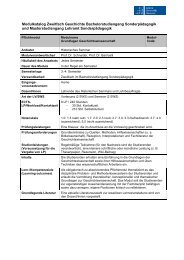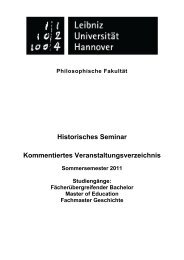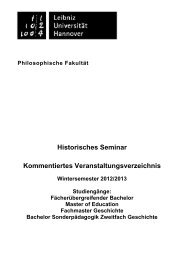''Os Bons Colonizadores'': Cuba's Educational Mission in Angola ...
''Os Bons Colonizadores'': Cuba's Educational Mission in Angola ...
''Os Bons Colonizadores'': Cuba's Educational Mission in Angola ...
Create successful ePaper yourself
Turn your PDF publications into a flip-book with our unique Google optimized e-Paper software.
Downloaded By: [Offenburger, Andrew] At: 04:36 8 August 2008<br />
Safundi: The Journal of South African and American Studies 59<br />
great lack of tra<strong>in</strong>ed teachers <strong>in</strong> Cuba. 20 Furthermore, the Cuban teachers worked<br />
<strong>in</strong> rural areas where neither <strong>Angola</strong>ns nor other foreign cooperators wanted to<br />
settle. 21 There were additional cooperative ventures <strong>in</strong> education with the GDR,<br />
Bulgaria, Yugoslavia, Czechoslovakia, and the Soviet Union, as well as with<br />
Western countries (Portugal <strong>in</strong> particular) and African countries (the Cape Verde<br />
Islands and Congo-Brazzaville, among others).<br />
My Cuban <strong>in</strong>terviewees confirmed directly or <strong>in</strong>directly that the mission <strong>in</strong> <strong>Angola</strong><br />
also had the effect of a personal experience of <strong>in</strong>ternationalism: of a sense of<br />
solidarity with and selfless sacrifice for a like-m<strong>in</strong>ded people. The mission filled many<br />
cooperants with pride, because they were the chosen ones serv<strong>in</strong>g the revolution and<br />
the patria. But Cuba’s civil mission seems to have been somewhat self-serv<strong>in</strong>g,<br />
directed towards its own political, social (and also economic) <strong>in</strong>terests, rather than<br />
solely towards the needs of the receiv<strong>in</strong>g country. The political <strong>in</strong>tention beh<strong>in</strong>d the<br />
organization of the delegation of Cuban youth was ultimately to offer those who were<br />
born dur<strong>in</strong>g the revolution—the generation whose parents had experienced the<br />
Literacy Campaign and the Bay of Pigs—a revolutionary mass experience, one that<br />
would educate them to become revolutionaries and patriots. One of my <strong>in</strong>terviewees<br />
summarized it po<strong>in</strong>tedly: ‘‘It was ...all that we didn’t experience, Girón [Invasion of<br />
the Bay of the Pigs, 1961], Moncada [assault on the Moncada barrack, 1953], the<br />
Literacy Campaign, the harvest of the ten million tons, those th<strong>in</strong>gs that had<br />
someth<strong>in</strong>g of heroism ...this thought was shared by many, many people, at least my<br />
generation.’’ 22 This goal was partly reached. Many participants of the educational<br />
mission today hold important positions <strong>in</strong> the Cuban system of education. <strong>Angola</strong>n<br />
documents on the other hand often reflect the deficiencies of the action force of<br />
<strong>in</strong>experienced student-teachers, who were between seventeen and twenty years old:<br />
‘‘The teachers of the DPI [Destacamento Pedagógico Internacionalista ‘Che<br />
Guevara’—the brigade of student-teachers] totally ignore the <strong>Angola</strong>n reality.<br />
Their pedagogic and scientific preparation is weak.’’ 23<br />
The civil cooperation was based on a scientific and technical skeleton agreement,<br />
dat<strong>in</strong>g from July 1976, which was signed on the occasion of Agost<strong>in</strong>ho Neto’s first<br />
20 The history of the ‘‘Destacamento Pedagógico Internacionalista Che Guevara’’ is of course more complex and<br />
will be highlighted <strong>in</strong> a forthcom<strong>in</strong>g article. Apart from this, one of the lead<strong>in</strong>g Cuban educationalists expla<strong>in</strong>ed<br />
to me the great difficulty of supply<strong>in</strong>g enough tra<strong>in</strong>ed teachers for Cuban secondary schools until the 1980s<br />
(<strong>in</strong>terview 10, La Habana, Cuba, 15 June and 22 June 2006).<br />
21 The highest concentration of Cuban teachers, students and University professors occurred dur<strong>in</strong>g the years<br />
1981–1983, when around two thousand cooperants per year were actively <strong>in</strong>volved <strong>in</strong> teach<strong>in</strong>g <strong>in</strong> <strong>Angola</strong>n<br />
primary and secondary and high schools <strong>in</strong> almost all prov<strong>in</strong>ces of the country (except for the war zones, like<br />
the southern prov<strong>in</strong>ce Kunene) and <strong>in</strong> the Agost<strong>in</strong>ho Neto University <strong>in</strong> Luanda and its dependencies <strong>in</strong><br />
Huambo (prov<strong>in</strong>ce of Huambo). Documents from the Department of International Exchange of the <strong>Angola</strong>n<br />
MED provide a wealth of statistical material such as numbers, distribution, and specialities of the Cuban<br />
teachers.<br />
22 Interview 67, La Habana, Cuba, 5 January 2004; my own translation from the Spanish.<br />
23 Document from the Direcção Prov<strong>in</strong>cial de Educação da Huila to the C. Director do Gab<strong>in</strong>ete de Intercâmbio<br />
e Cooperação Internacional do MED [Head of Prov<strong>in</strong>ce Department of Huila of the MED to the Director of the<br />
Department of International Exchange and Cooperation], Lubango, 7 November 1978, p. 2; my own translation<br />
from the Portuguese.


